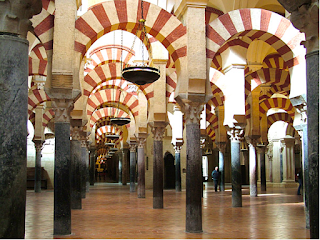What is happening between Ukraine and Russia *Simple terms
(Some things have been purely simplified just so that it is easier to
understand). Some understanding is better than NO understanding.

At one point in time Russia was a world superpower.
Particularly between 1945 and 1991 when of course, Russia was called the USSR
*a very big powerful communist state. Lots of independent countries around
Russia were part of the Soviet Union (Including Ukraine), making the USSR extremely powerful. The
USSR at this point had lots of influence over places like Ukraine, Latvia and
Belarus. Between these years, the other superpower in the world was the USA.
The USA and USSR competed against each other as to who could be the
most powerful and the richest and have the most nuclear weapons. This was the
Cold War! To be more powerful against the USSR, the USA and other western
countries created NATO *North Atlantic Treaty Organisation. NATO is a group of
countries including Britain, USA, Turkey etc who have promised to help each
other out if any one of them is invaded or attacked. Ukraine have recently
wanted to be part of NATO! Lots of countries surrounding Russia are already
part of NATO, SO Russia to some extent feels threatened by the
situation as they have very few allies (friends) close by their borders. Russia really
can not afford for Ukraine to become part of NATO too, they would be surrounded
by very Pro USA countries. And of course, USA and Russia do not get along at
all. One of the things Vladmir Putin is saying is that he is going into Ukraine to stop this NATO expansion and to defend Russia´s security!

Back to Ukraine, at the minute it is an independent country.
In 2014, a part of Ukraine called the Crimea was invaded by the Russians. It is
worth remembering that there are many people in Ukraine who are Russian
speakers and WANT to be part of Russia or at least under Russian influence. But
there are another group of Ukrainians who DON’T want to be part of Russia and
want to be closer to NATO. Crimea was one of these places that was split
between those who supported Russia and those who didn’t. Russia went in with
its army in 2014 and invaded and Crimea came under Russian control.
Crimea was also important as it has a deep water port crucial for trade and strategic stuff. The West in
2014 did very little after this invasion, they tried to punish Russia using
economic sanctions. Maybe another reason they didn’t really say anything was
because The West relies a lot on Oil and Gas supplies coming from Russia.
Clearly at that point it wasn’t worth a war! So fast forward 8 years and
recently Russia have started to put their soldiers on the border between Russia
and Ukraine, still worried about the prospect of Ukraine becoming part of NATO.
Clearly then, this is an act of aggression and creates tension between Russia
and the West who is supporting Ukraine.
Russia have been threatening to push
their soldiers into Ukraine for a while and they have got some supporters IN
Ukraine called ´´ukrainian seperatists or rebels´´. The situation reached a
boiling point a few days ago when Putin made a speech declaring an area called
‘Donbas’
- 2 places Donetsk and Luhansk
as an independent region. (these places have lots of Russian speakers and
supporters)! It is a little bit like France going into Barcelona and declaring it a seperate state! The problem is, they are legally part of UKRAINE! The west then,
saw this as an act of aggression and started putting sanctions on Russia
economically e.g. stopping their banks from being able to trade on European
markets, freezing the assets of Russian oligarchs *very rich Russian people who
own important companies like GAZPROM. Russia then probably thought that they
have nothing to lose and launched a full scale invasion of Ukraine
with some cities being shelled.

The situation now is that, Russia in some ways have little
to lose. They will probably continue doing what they are doing. What will need
to be seen now is the way Europe and The USA react. NATO cannot intervene
directly in Ukraine as Ukraine is not part of NATO. However, the individual
countries can support Ukraine with weapons *which they have been doing already.
The West also does not benefit from a war in this instance, as gas pipes flow
through Russia and Europe gets about 1/3 of its gas from Russia. Putin could
easily turn the gas pipes off or make things extremely expensive for The West. But by doing this, Putin also loses out economically in the long term. Iran is also allied with Russia and both have nuclear capabilities. China´s
position remains to be seen. On the other hand, Turkey is a member of NATO and
could make life equally as difficult for the Russians by cutting off black sea
access but again Turkey is trying to keep friends on both sides.
Its also true to be careful of
misinformation on both sides. Russia is telling its people stories that
Ukrainians are gathering and putting Russian speakers in Ukraine in concentration
camps. There is a fascist element in Ukraine but it is not THAT strong. While the USA has been spreading misinformation suggesting Russia is
going to invade earlier than expected. The USA also said that Iraq had weapons
of mass destruction in 2003 which turned out to be a lie. So, lots of misinformation on both sides......but learn the History and think critically.






